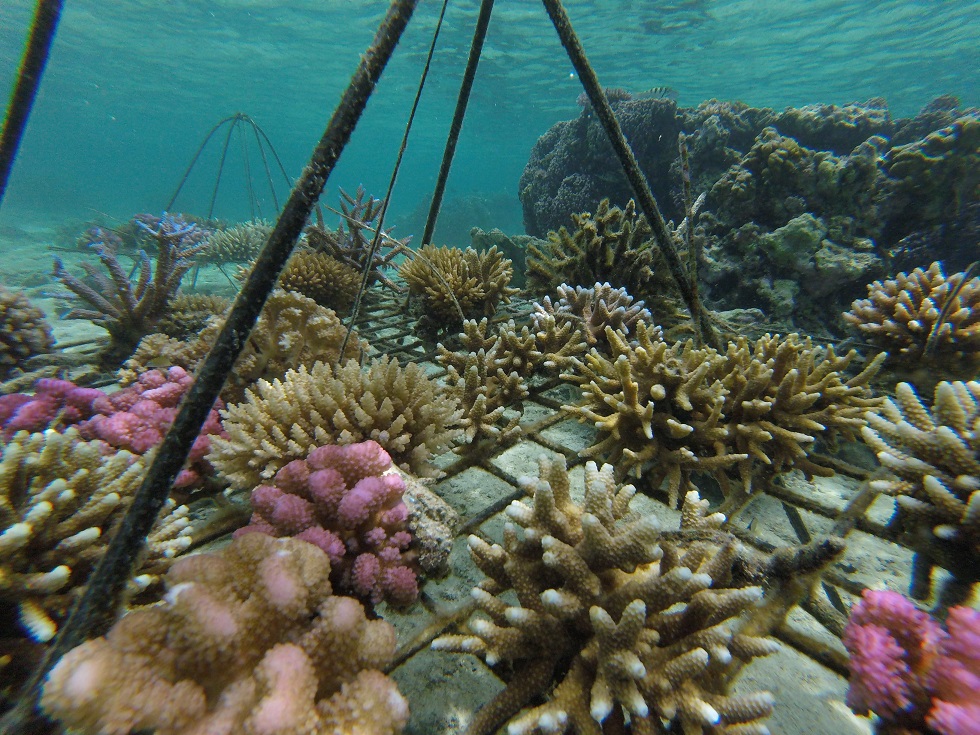

Coral gardening, also known as mariculture, is undertaken by collecting small pieces of broken coral in shallow waters and re-attaching them to so-called spiderweb cages (portable metal frames).
The coral fragments are eventually transplanted to large coral frames in places where the reef has been destroyed by cyclones, crown of thorns starfish or other climate change-linked hazards. The coral beds are placed in around 6 meters of water, enough to keep them safe from cyclone swells, where they can grow into full size coral colonies.
The project uses coral varieties that are particularly resilient to the climate change impacts of bleaching and ocean acidification. The artificial reefs create new habitat for fish, and provide coastline protection from waves.
- Implementation in the context of the participatory management of the NPMLPA, characterized by extraordinary community stewardship and engagement.
- Awareness raising for community members on the current threats to coral reefs and the importance of corals for climate change adaptation, coastal protection, biodiversity but also for local people’s livelihoods and socio-economic development.
- Capacity building measures for participating community members, including respective training material
- Different varieties of coral show differing levels of planting success. It has been important to trial multiple coral varieties and identify those that are most resilient to temperature and acidification as well as those that grow best in our planting conditions.
- Women are some of the most effective coral gardeners. When they wade on the reef they are able to delicately and successfully find living coral fragments that have broken naturally due to wave damage.
- Coral must be firmly attached to the planting bed with cable ties or tie wire; if the coral does not have firm contact to the bed, it cannot continue to grow.
- Youth and children have learned, through coral planting, that corals are living organisms. Using this activity as an educational tool outside the classroom has improved understanding of the underwater ecosystem, now considered as important as the terrestrial and garden ecosystems.